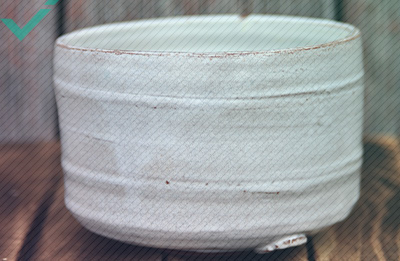SEO is a huge topic that encompasses many tiny, seemingly unimportant aspects of a webpage. One of those aspects are URL slugs. In this article, we’ll take a look at what a URL slug is, how it works, and how such a tiny aspect of your site can have such a huge impact on your SEO and usability.
WHAT ARE URL “SLUGS” AND WHY ARE THEY IMPORTANT FOR SEO?
The term “slug” refers to the final part of a URL. In the URL of this blog post, for example, the slug is /seo-explained-importance-url-slugs-133. The slug of our blog’s URL, on the other hand, is simply /blog. The role of a slug is pretty basic; it identifies a particular page/post within a website/blog. The term actually comes from the WordPress community, who began using slugs to identify the individual pages of a site instead of a random collection of letters, numbers, and symbols that would comprise a default URL. Today, most websites are built using short, clear slugs to identify all the different pages of the site’s architecture. And there’s very good reason for that. Although slugs might seem pretty unimportant, they can actually have a huge influence on the SEO of your site. Using slugs that are clear and relevant to the keywords you’re targeting for that particular website is a great way to tell search engines what the page is about, as well as attract organic traffic from search.
HOW SLUGS CAN HELP YOUR SEO EFFORTS
Slugs can affect the SEO of a website in two main ways; in addition to communicating with search engines, slugs also help communicate with users who come across your site in search results, enticing them to click on your content. First and foremost, slugs are a great way to communicate with Google and other search engines. Remember, search engines work to provide users with the best online experience possible. The algorithms they use are designed to render the best possible content based on a user’s search query. To find this content, the algorithms consider a wide variety of different metrics. For example, they look to locate keywords used in search queries in key parts of a webpage. Hence, including specific keywords relevant to the search queries you’re targeting in your URLs is a pretty good sign for Google that your page might have relevant info to share.
Secondly, slugs can also help you better communicate with actual users. When users are looking at search results in Google, they decide on what link to click based on a number of variables. Obviously, the rank of results plays a huge role here, but so do things like a page’s metadata and slug. Just like slugs can help tell search engines what your webpage is about, they do the same for human users. Whatever you’re searching for in Google, chances are you’re more likely to click on a result with a slug containing the keywords you searched for than one that doesn’t.

HOW TO CHANGE YOUR SLUG IN WORDPRESS
If your website was built using WordPress, you can edit the slugs of your different pages under the permalink tabs in “Settings”. If you haven’t made any changes to your permalinks yet, you may find they default to some random assembly of letters, numbers, and symbols.
Hence, your post URLs might look something like this:
http:/www.exampledomain.com/blog/?p=189
You’ll want to update these settings as soon as possible and run through all the live links on your site to update their slugs. The default slugs created by WordPress are far from SEO-friendly and will do little to convince users to click on your link. Ideally, we recommend changing your permalink settings to “Post Name”. WordPress will then automatically take the name of the post/page you’re creating and use that as the slug. This is a good way to ensure you have no ugly links on your site (like the example we used above). Next, make sure you manually edit the slug of any new post/page you create. You can do this right underneath the title of the page/post using the little “Permalink” bar. We also recommend you regularly sweep your entire website and review every URL to make sure it’s optimised for search and usability.
WHAT TO CONSIDER WHEN CREATING CUSTOM URL SLUGS
Creating custom slugs for your website might seem simple. But you’d be surprised how many websites still get this wrong. Below are a few tips to help you create great URL slugs that give your SEO a boost.
1: USE KEYWORDS YOU’RE TARGETING
Remember, the best way to ensure search engines are going to rank your content properly is to make it as easy as possible for them to know what your content is about. Hence, make sure your URL slugs contain the keywords you’re targeting with a particular page/post. If you’re creating a blog on the best restaurants in Chicago, for example, make sure to use the keywords “best restaurants Chicago” in the slug. This will help Google know what your post is about, and will also appeal to users searching for content on this topic.
2: CUT OUT STOP WORDS
“Stop words” are words like “the”, “in”, “to”, “of”, and more. Google and other search engines tend to ignore these words as they don’t help their algorithms better understand the content they’re looking at. Since search engines ignore these words, it’s a good idea to just cut them from your slugs as much as possible. This will help keep your slugs short and clear, which makes them more accessible for algorithms and more appealing for users. We’ll cover this in more detail below.

3: KEEP IT SHORT
Arguably one of the most important aspects of your slugs is their length. The shorter a slug, the easier it is for search engines to analyse and understand, and the better it looks in search results. The general rule of thumb is to stick to a maximum length of roughly 50–60 characters whenever possible for the entire URL. We understand, however, that it’s not always possible. As such, we just recommend keeping your URLs as short as you can without driving yourself crazy. That means, don’t beat yourself up if your URL is longer than 60 characters.
4: USE 1 DOMAIN AND 1 SUBDOMAIN
Take this next tip with a grain of salt. We generally recommend keeping your content spread across a single domain and subdomain wherever possible. Here’s why: There are plenty of SEO horror stories of webmasters who saw their rankings drop after making a shift to a new subdomain. That’s because search engines sometimes consider content on two different subdomains differently, and the ranking of your primary domain won’t always pass over to your subdomain. However, there are also some stories from people who saw improved rankings once they moved their content to a subdomain. This shows that the algorithms used to determine the ranking of content spread over different domains aren’t always coherent. Nonetheless, we always recommend keeping your content on a single domain as it just streamlines the process for search engines.
5: CUT OUT DYNAMIC PARAMETERS
Dynamic parameters are things that look like numbers, symbols, or equations. They are super ugly, clutter your URLs, and make them seem less trustworthy to your readers, so it’s best to cut them out when you can. Now, it’s true that using URL parameters is inevitable sometimes. In that case, don’t worry about them unless you’ve got multiple parameters per URL. If that’s the case, it might be worth investing in having them rewritten.
6: USE FEWER PAGE CATEGORIES
This is another tip to take lightly. In general, we recommend keeping fewer folders in your URLs. Again, this helps keep them shorter and makes them appear easier to read for both users and search engines.
Take this URL for example:
https://www.exampledomain.com/liquor-library/beer/styles/craft-beer.
The many folders make the site seem deep and complicated. If you took that same URL, however, and changed it to something like: https://www.exampledomain.com/liquor-library/craft-beer, the site immediately seems simpler to use and navigate, both for Google’s crawlers and users seeing the URL in search. Again, this comes down to the actual layout of your website and might not always be feasible to change. Nonetheless, it’s a good tip to keep in mind to help ensure your URL slugs are optimised for search and usability.


